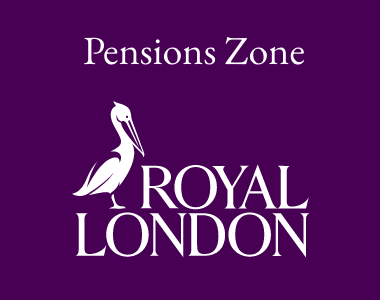The requirement imposed on Trustees to register trusts under the Trust Registration Service is an ideal opportunity for financial advisers to remind Trustees of their statutory duty to seek investment advice under the Trustee Act 2000 and to revisit the current trust investments, says Mark Green, senior tax and trust manager, HSBC Life.
The basic rule for trust investments is that if the trust deed gives the Trustees wide investment powers, they can invest in a wide choice of investments (provided they satisfy the standard investment criteria). In addition, under the Act, Trustees are given a general power of investment to permit them to invest in investments of any kind as if they were absolute owners of the trust assets. This general power of investment also applies to existing trusts whenever created.
The exercise of the trust investment powers by the Trustees is subject to three conditions:
1. The statutory duty of care
The exercise of the investment powers by Trustees will usually be subject to the statutory duty of care. This requires Trustees to exercise reasonable care and skill when fulfilling their duties. This duty takes into account what is reasonable to expect from each Trustee, taking into account their individual knowledge and experience when fulfilling the powers granted to them.
Therefore, the standard of care for a Trustee exercising investment powers would be higher for a stockbroker than, say, a bus driver.
It is very unusual to exclude the statutory duty of care or replace it with a different duty.
2. The standard investment criteria
This applies to all trusts whenever created and requires Trustees to consider the need for diversification and suitability of trust investments.
Diversification simply means the Trustees should consider a spread of trust investments but only where this is appropriate. The requirement to consider the need for diversification is not an obligation to diversify. For example, where a discounted gift trust has been created by having an investment bond transferred into it then there would be no need to consider diversification since the Settlor has planned to use the trust and the bond for a particular estate planning purpose.
The suitability of the trust investment relates to both the kind of investment proposed and to the particular investment as an investment of that kind. The Trustees will need to consider risk and the balance between income and growth; they are also required to keep the trust investments which are to be retained under review, and to consider whether they should be varied.
3. Obtaining and considering proper advice
Under the Act, the Trustees must obtain and consider advice in two circumstances:
- Before exercising any power of investment, Trustees must obtain and consider proper advice about the way in which, having regard to the standard investment criteria, the power should be exercised, and;
- When reviewing the investments of the trust, Trustees must obtain and consider proper advice about whether, having regard to the standard investment criteria, the investments should be varied.
The Act states that proper advice would be from a person who the Trustees reasonably believe to be qualified to provide it by their ability in, and practical experience of, financial and other matters relating to the proposed investment. Such as a financial adviser.
The requirement to obtain and consider advice applies to all trusts but there is an exception under the Act where Trustees reasonably conclude that, in all the circumstances, it is unnecessary or inappropriate to do so. For example, where a Trustee is qualified and can provide advice at reasonable fees.
The choice of trust investments
With wide investment powers the Trustees could invest in a wide variety of assets including property, stocks, and shares, OEICs and unit trusts and investment bonds. An important factor in this choice is the tax consequences of the chosen investment. In this article I will consider the tax consequences of investment bonds held in discretionary trusts.
The investment bond can be considered as a wrapper which holds collective investments. The investment bond in turn is held by another wrapper, the trust. Each wrapper has its own unique tax benefits. The trust can provide inheritance tax planning opportunities whilst the investment bond can provide capital gains tax and income tax opportunities.
There are two ways an investment bond can be set up in trust: either by the Trustees from cash held in the trust fund; or when the Settlor (the person who created the trust) assigns an investment bond they own by way of gift into trust.
The investment bond would not be subject to Capital Gains Tax (CGT) when the underlying collectives such as OEICs or unit trusts are switched. This enables the Trustees to change the underlying funds without CGT arising on the Settlor or the discretionary trust. With the recent proposed reductions announced to the CGT annual exemption, Trustees with trust assets subject to CGT should plan how to mitigate the effect of those reductions.
An investment bond does not produce income in the hands of the Trustees, only capital, so the normal income tax rules do not apply. This is because, the investment bond is taxable under the income tax chargeable event regime. This regime applies to both onshore and offshore investment bonds. The onshore investment bond has a basic rate tax credit which covers any income tax liability at the basic rate of income tax.
The investment bond will normally be issued as a series of separate but identical policies, each of which is treated independently of the others. This segmentation gives the Trustees considerable flexibility to undertake strategies which can minimise any income tax liability arising from any gains made.
Under this regime, a liability to income tax can only arise if a chargeable event occurs, there is a chargeable event gain and there is a chargeable person to whom the gain can be attributed. A chargeable event will arise, for example, on the death of the last life assured, full surrender of the bond or when certain part surrenders are made.
With a discretionary trust, the chargeable person to whom the gain can be attributed follows a defined path. Firstly, the Settlor who is taxed at their highest marginal rate, if alive and UK resident. If the Settlor is deceased, it would then be the UK resident Trustees at the rate of 45%; or failing whom, a UK resident beneficiary when receiving a benefit from the trust depending on their personal income tax position.
Regular withdrawals from the investment bond offer a significant income tax planning opportunity – as up to 5% of the original investment every year can be taken without any immediate income tax charge. Any part of this allowance which is unused can be carried forward. This means that income tax liability can be deferred until 100% of the original investment has been withdrawn, or the bond comes to an end. Any amount over the 5% yearly allowance may be subject to income tax.
Summary
Trustees must exercise their investment powers based on the powers set out in the trust deed and the Trustee Act 2000. They must exercise their statutory duty of care using the level of knowledge and experience expected of them and should obtain and consider proper advice from a person with the appropriate financial knowledge. They must also pay attention to the standard investment criteria. With the proposed reductions in the capital gains tax annual exemption, Trustees should review their current trust investments and consider alternatives, such as investment bonds, to hold those investments.






























